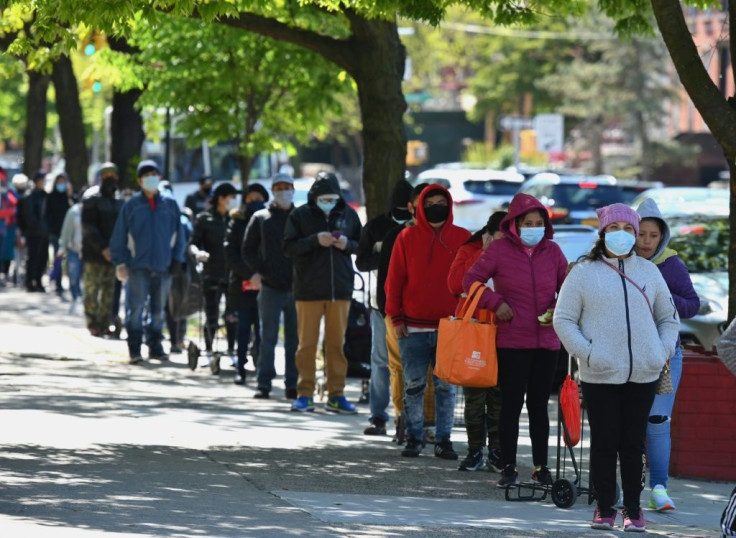If Trump Ends Deployment Of National Guard For Coronavirus, Workers To Miss Out On Benefits 1 Day Before Qualification

KEY POINTS
- To qualify for federal benefits, guardsmen must serve 90 days. The current order was for 89 days
- It would cost states $9 million a month for every 1,000 troops to keep the guardsmen on the job
- The possible cutoff comes as states are attempting to restart their economies, making testing and contact tracing that much more important
The Federal Emergency Management Agency may release some 40,000 National Guard members from duties helping states administer coronavirus tests and perform contact tracing and other duties so it won’t have to pay them federal benefits.
Politico reported it had obtained a recording of a senior FEMA official ordering a “hard stop” to National Guard activities June 24, one day before guardsmen who began performing the duties would qualify for early retirement and education benefits. Those who deployed in March will have served 89 days, one day short of the threshold established after the Sept. 11, 2001, terror attacks.
“We would greatly benefit from unified messaging regarding the conclusion of their services prior to hitting the 90-day mark and the retirement benefit implications associated with it,” the unidentified official allegedly told dozens of colleagues participating on an interagency call.
Word of the possible cutoff comes as states take more steps to open up their economies. Public health officials have said testing and contact tracing are key to keeping the COVID-19 pandemic under control.
Lawmakers and governors have been lobbying to have President Trump’s emergency declaration extended, some seeking an extension through the fall.
Trump’s current order funding the guardsmen expires June 24. The deployment costs an estimated $9 million a month for every 1,000 troops, the National Council of State Legislatures estimates – a cost states are ill-equipped to handle as the pandemic drags on. Trump activated the troops March 13.
“All of the missions are going to continue for months to come,” said Casey Katims, the federal liaison for Washington state Gov. Jay Inslee. “The need for testing, the need for meals, the need for contact tracing don’t disappear on June 25. So if the administration allows [Trump’s order] to expire, that will mean fewer personnel to assist Washington in each of these critical missions.”
National Guard spokesman Wayne Hall said there has been no final decision, saying there is no way to forecast needs a month from now.
Retired Brig. Gen. J. Roy Robinson, president of the National Guard Association, is not so sure.
“It seemed kind of weird to me,” he told Politico. “It’s a Wednesday. And it also coincides with 89 days of deployment for any soldiers who went on federal status at the beginning. … They’re screwing the National Guard members out of the status they should have.”
The 40,000 guardsmen are serving in 44 states, three territories and the District of Columbia, many of them working full-time since early March. In addition to coronavirus testing and contact tracing, the guardsmen helped build field hospitals, sanitized nursing homes and other facilities, and helped package and move supplies and food.
© Copyright IBTimes 2025. All rights reserved.






















